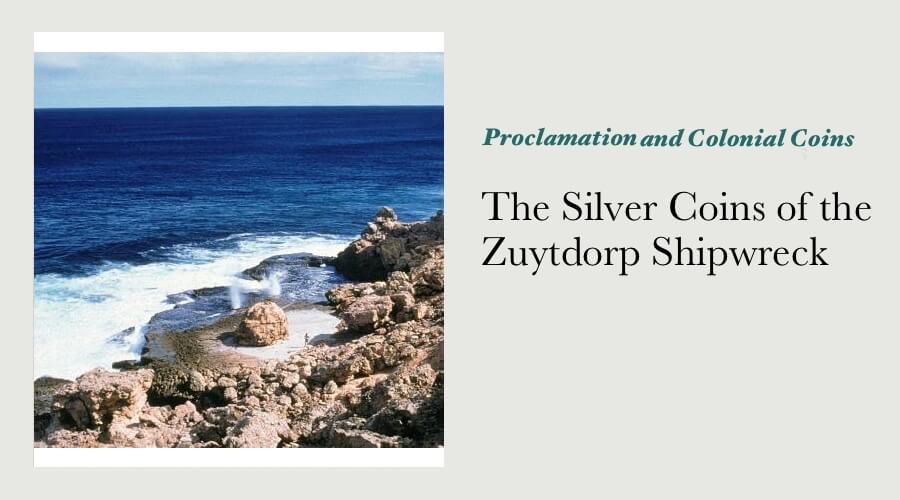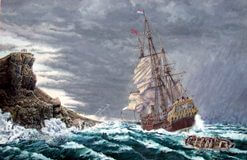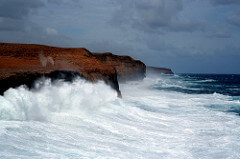The Silver Coins of the Zuytdorp Shipwreck


The Zuytdorp was a Dutch VOC sailing ship that sank off the Western Australian coast near Kalbarri in 1712.
It is the third of the four shipwrecks that sank off the WA coast before the Swan River Colony was established in 1829 that have yielded coins available to collectors.
The horrific circumstances of the Batavia shipwreck are well known, what is less known is that the journey and wreck of the Zuytdorp are arguably just as harrowing.

The conditions on the Zuytdorp on it’s the outward journey from the Netherlands were so appalling that nearly half of the crew had either died, deserted or were seriously incapacitated by the time they reached what is now South Africa.
The Zuytdorp remained at the Cape for a month, after taking on fresh provisions and crew it left Cape Town on April 22nd 1712. Within a day of leaving for Batavia, it was never seen or heard from again.
The exact circumstances of the Zuytdorp’s demise are not known, it’s final resting place was not identified for another 246 years, when identified it was conclusively established as having wrecked on the Western Australian coast.
A Select Committee that reported to the Western Australia Parliament in 1995 that “at least some survivors may have intermarried with the local Aboriginal community between present-day Kalbarri and Shark Bay.” It was their opinion that “On this alone could hang the question of just who really were the first European progenitors on the Australian continent.” If there were survivors from the shipwreck of the Zuytdorp, and if those survivors did live among the indigenous population for a period of time, their story would undoubtedly challenge conventional notions of the British settlement of the Australian continent.
Stories of the wealth of this wreck have long held the interest of people living in the Swan River Colony or the Western Australian public, tales discussing the survivors can be traced as far back as 1834.
One of the reasons the coins recovered from this wreck are so rare in private hands is the inaccessibility of the wreck site - it was one of the very last stretches of the entire Australian coastline to be charted. Diving conditions at the wreck site (at the base of cliffs that range between 30 metres and 200 metres in height) are so dangerous that it can only be accessed several days a year.
Those few coins that have been recovered from the Zuytdorp are tightly held by those that recovered them - they are very rarely seen on the open collector market. A further point of interest regarding the coins recovered from the Zuytdorp is that the entire mintage of the silver 6 stuivers (otherwise known as shillings) by the Zeeland Mint in 1711 went down with the Zuytdorp.
The Vessel:
| Owner | V.O.C. |
| Rig Type | Retourschip |
| Tonnage | 1,152 tons |
| Length | 54.30m |
| Breadth / Beam | 11.32m |
| Depth / Draft | 4.81m |
The Voyage:
| Country of Origin | Netherlands | Intended Destination | Batavia (Indonesia) |
| Departure Port | Wielingen | Wreck Location | Zuytdorp Cliffs, Shark Bay |
| Departure Date | August 1st 1711 | Wreck Date | June 1712 (exact date not known) |
| Captain | Marinus Wijsvliet | Description of Cargo | Coins, general cargo |
| Crew on Board | 200 ~ 250 (exact number not known) | Crew Dead | 200 ~ 250 (exact number not known) |
| Crew Survived | None | Crew Unaccounted For | |
Zuytdorp Shipwreck Identification:
| Location Date | May 16th, 1964 |
| Primary Finders | Tom Pepper and Phillip Playford |
| Secondary Finders | Ada Drage, Max Cramer, Graham Cramer, Tom Brady |
Zuytdorp Shipwreck Coin Statistics:
| Known On Board | 248,000 Guilders (total value) |
| Unrecorded or Not Recovered | Between 568,000 and 2,480,000 |
| Recovered From Wreck Site | |
| Scrap / Conglomerate | |
| Held by WA Maritime Museum | Approximately 14,000 coins |
| Legally Held In Private Hands | 616 (excluding coins in conglomerate) |
Some historians believe "Solving the puzzles associated with the Zuytdorp continues to be one of the most absorbing detective stories in Australian maritime archaeology."
The incredibly rare silver coins recovered from the Zuytdorp are a direct link between one of the first times white Europeans made contact with the Australian continent.